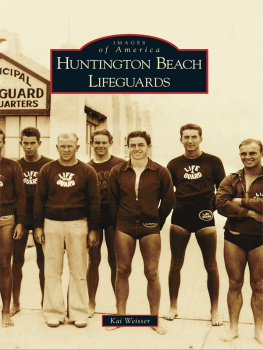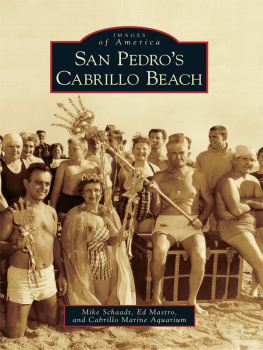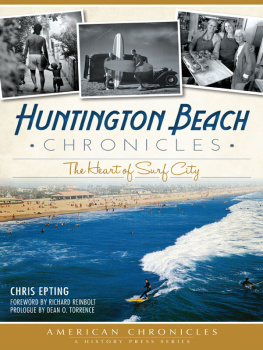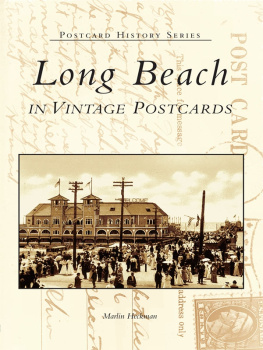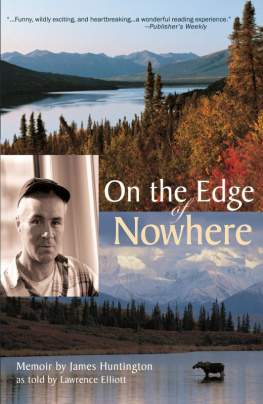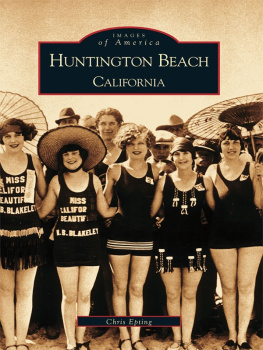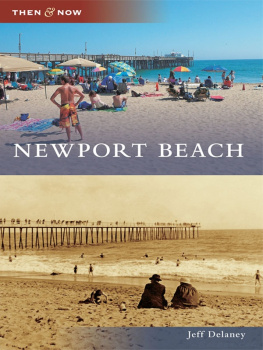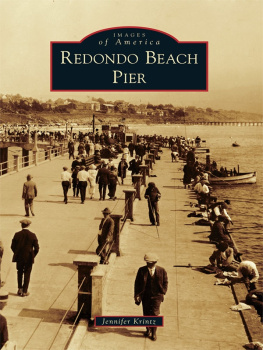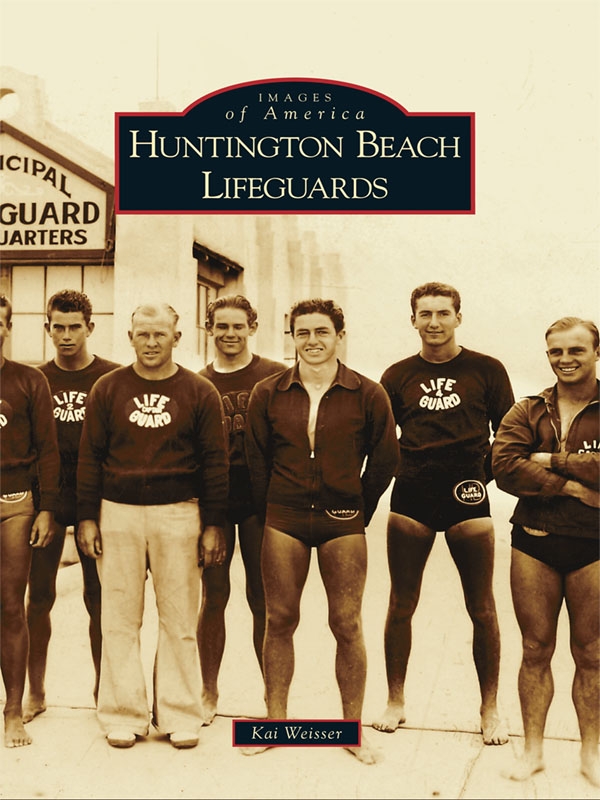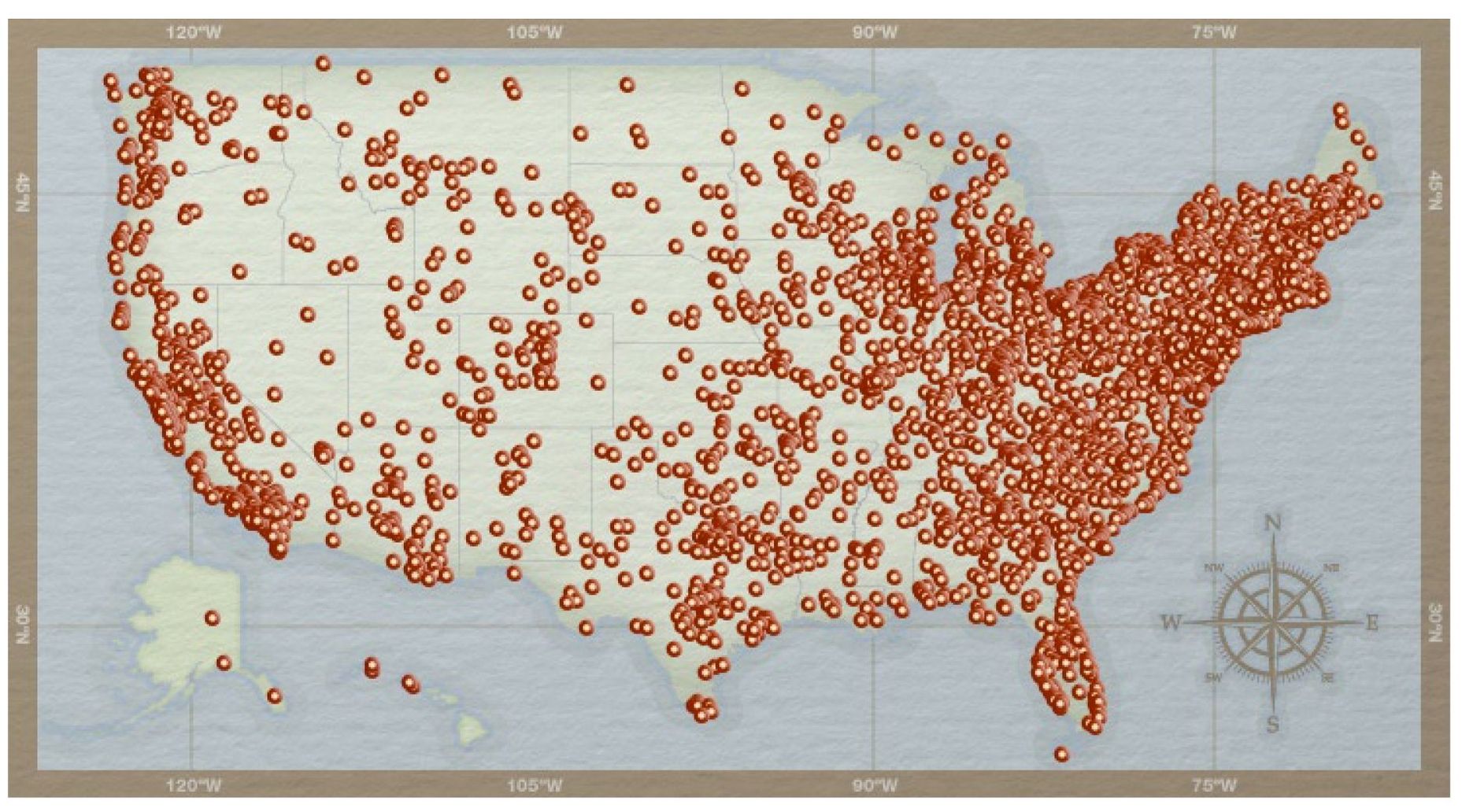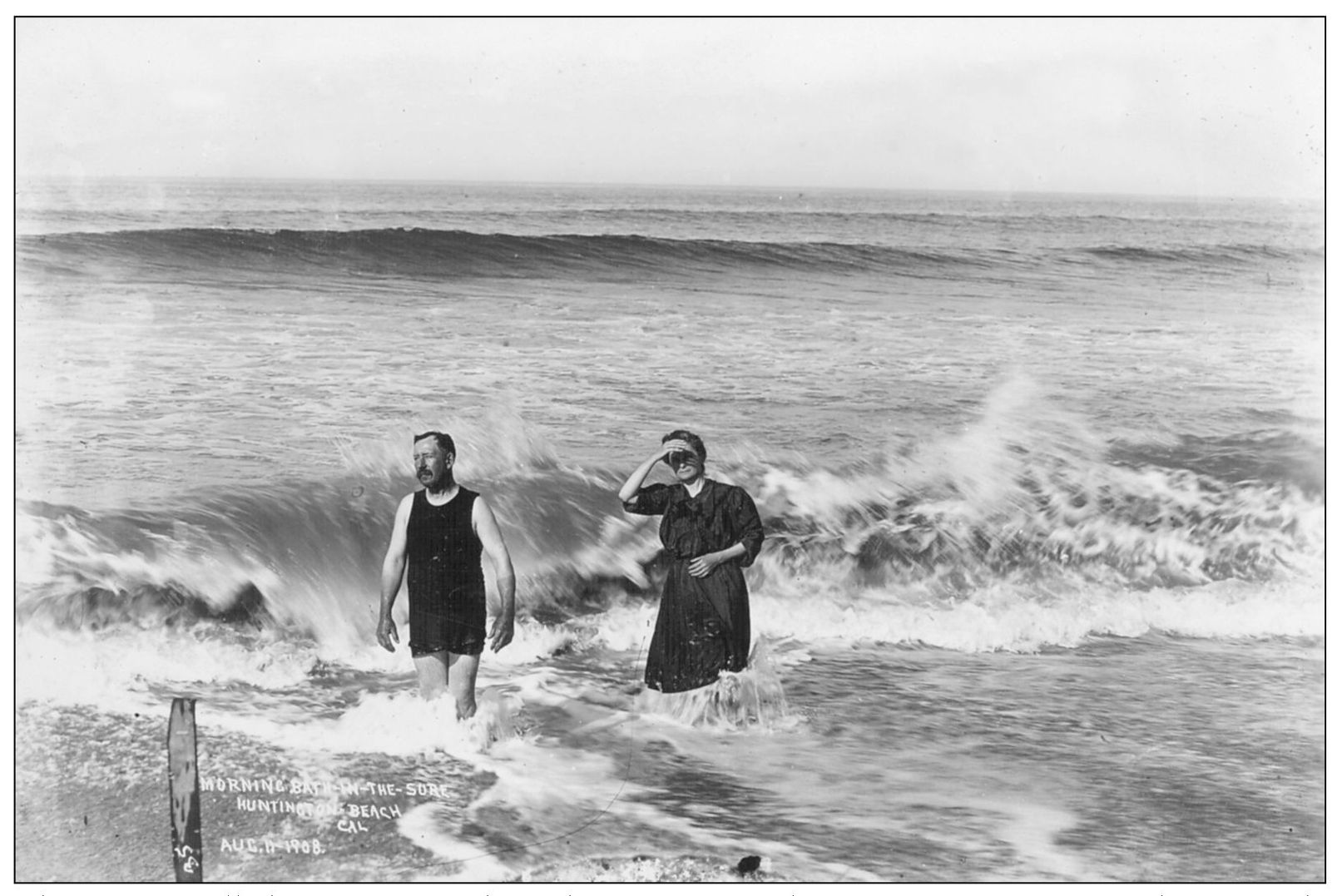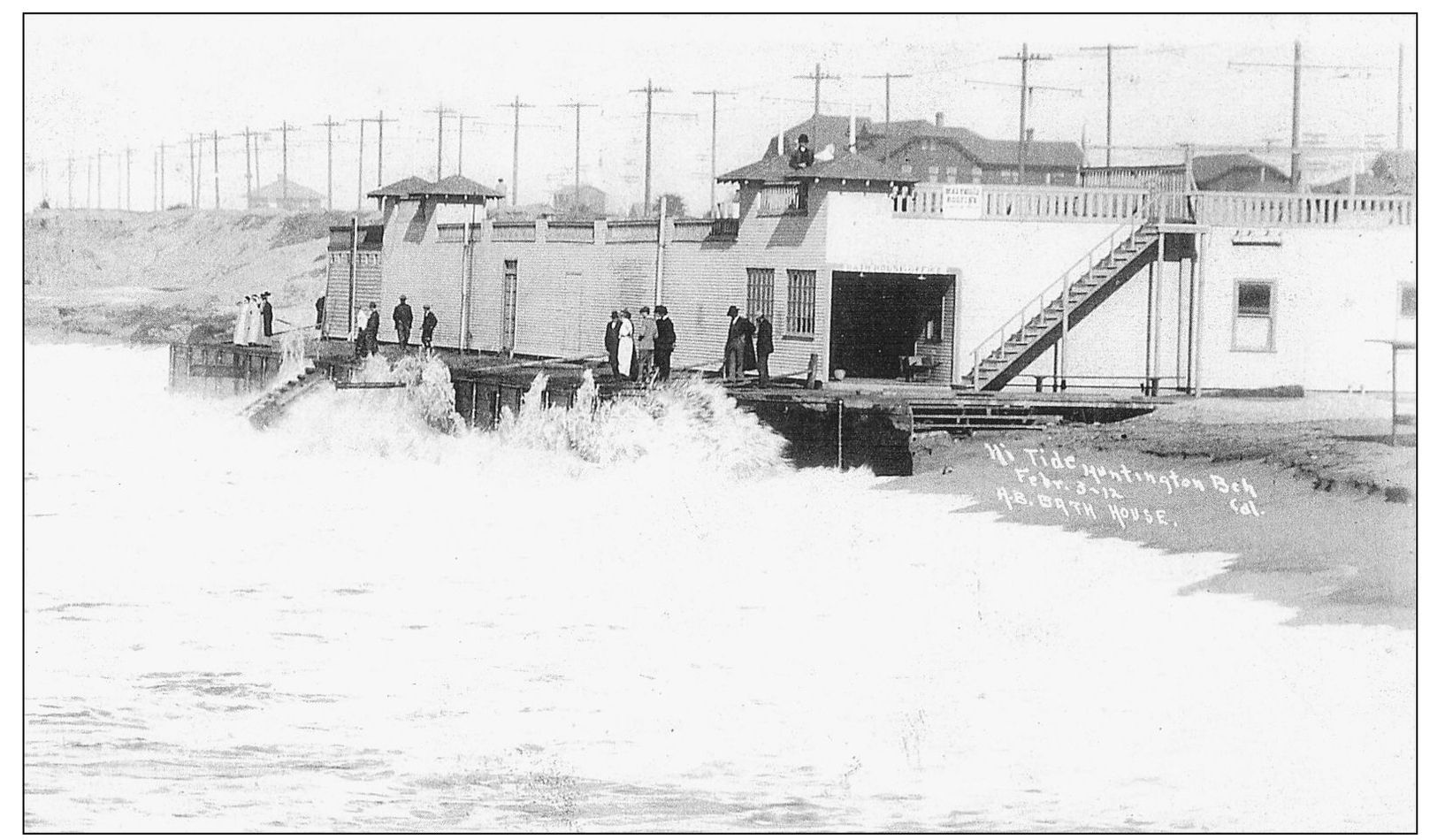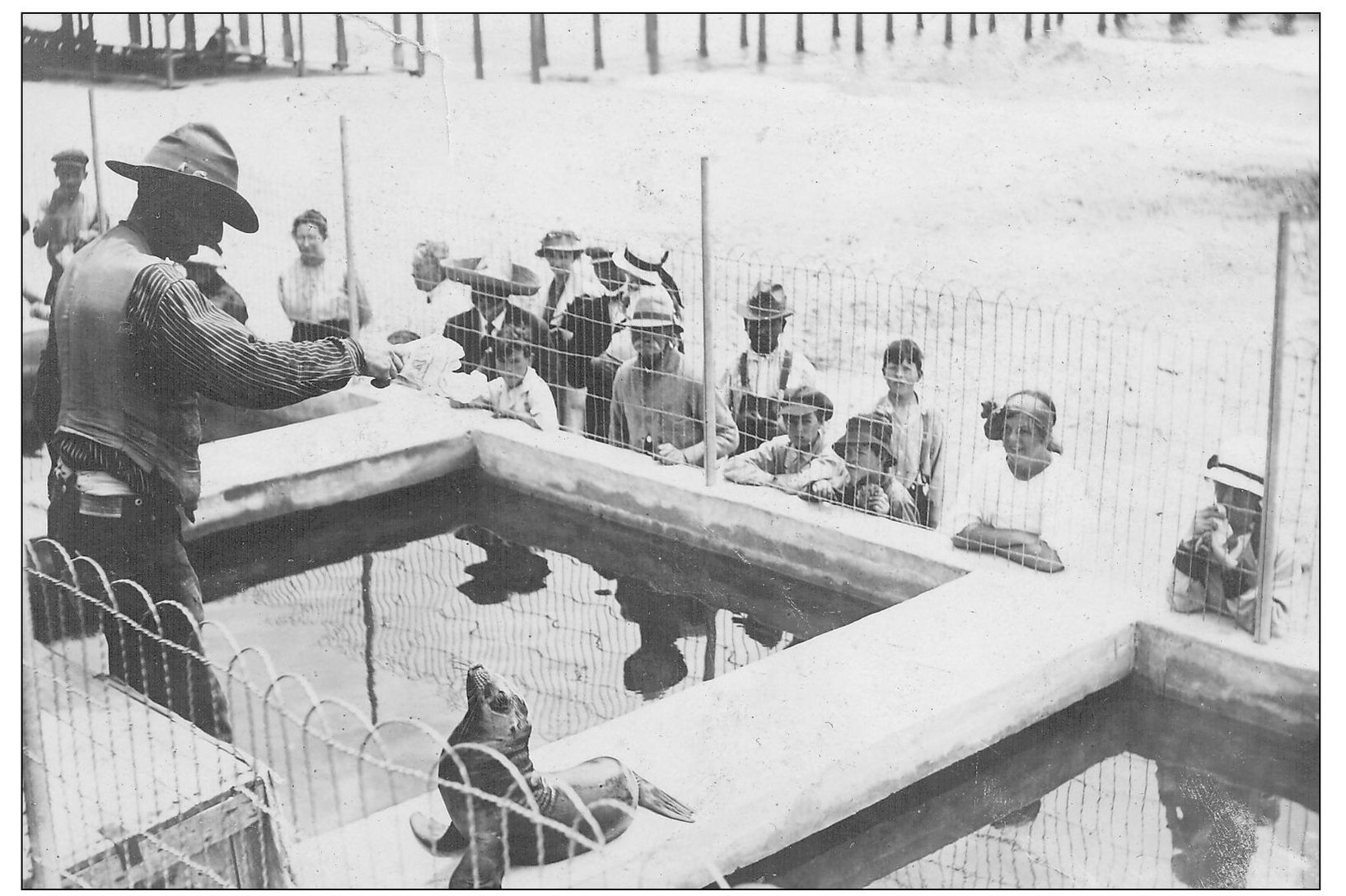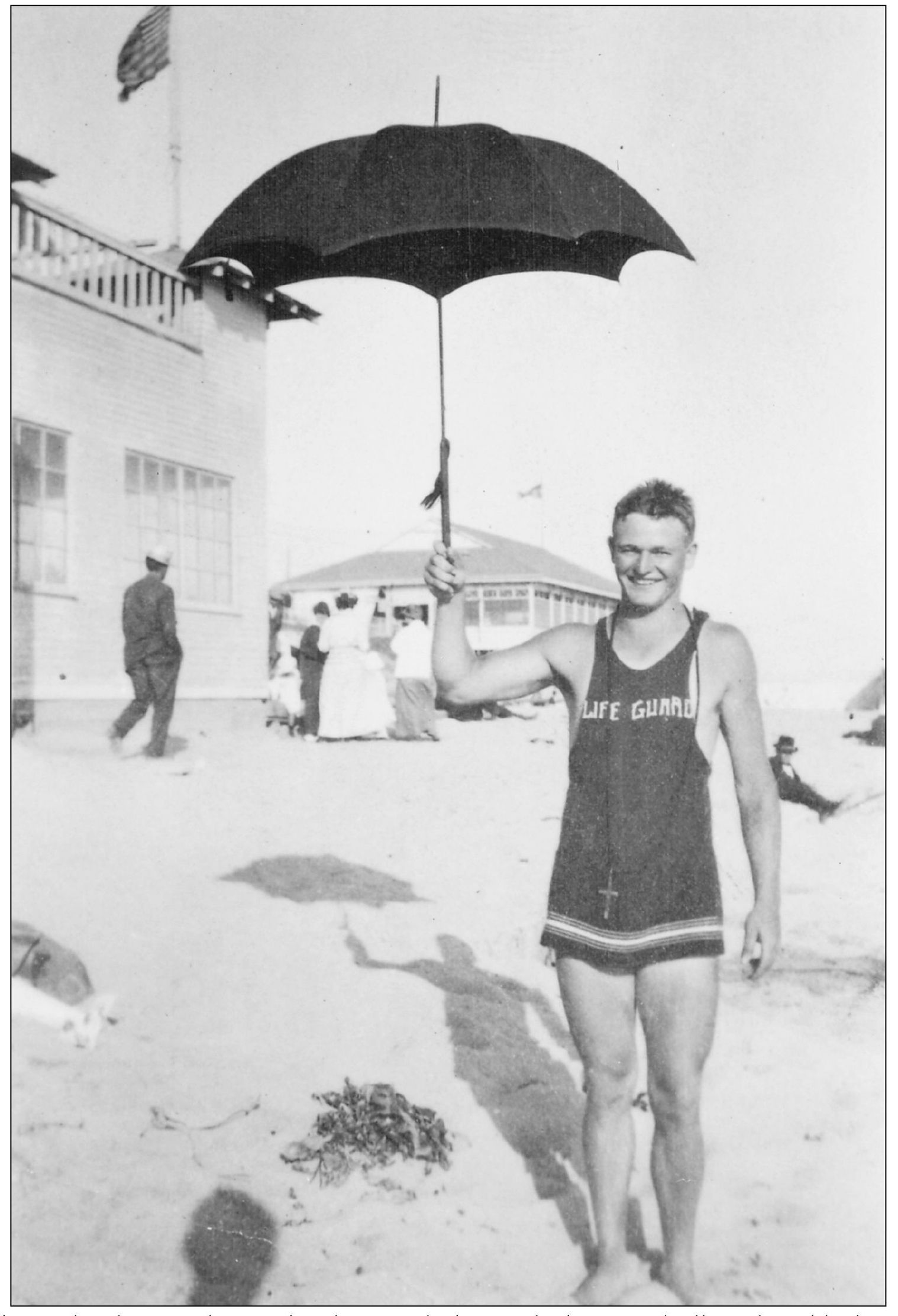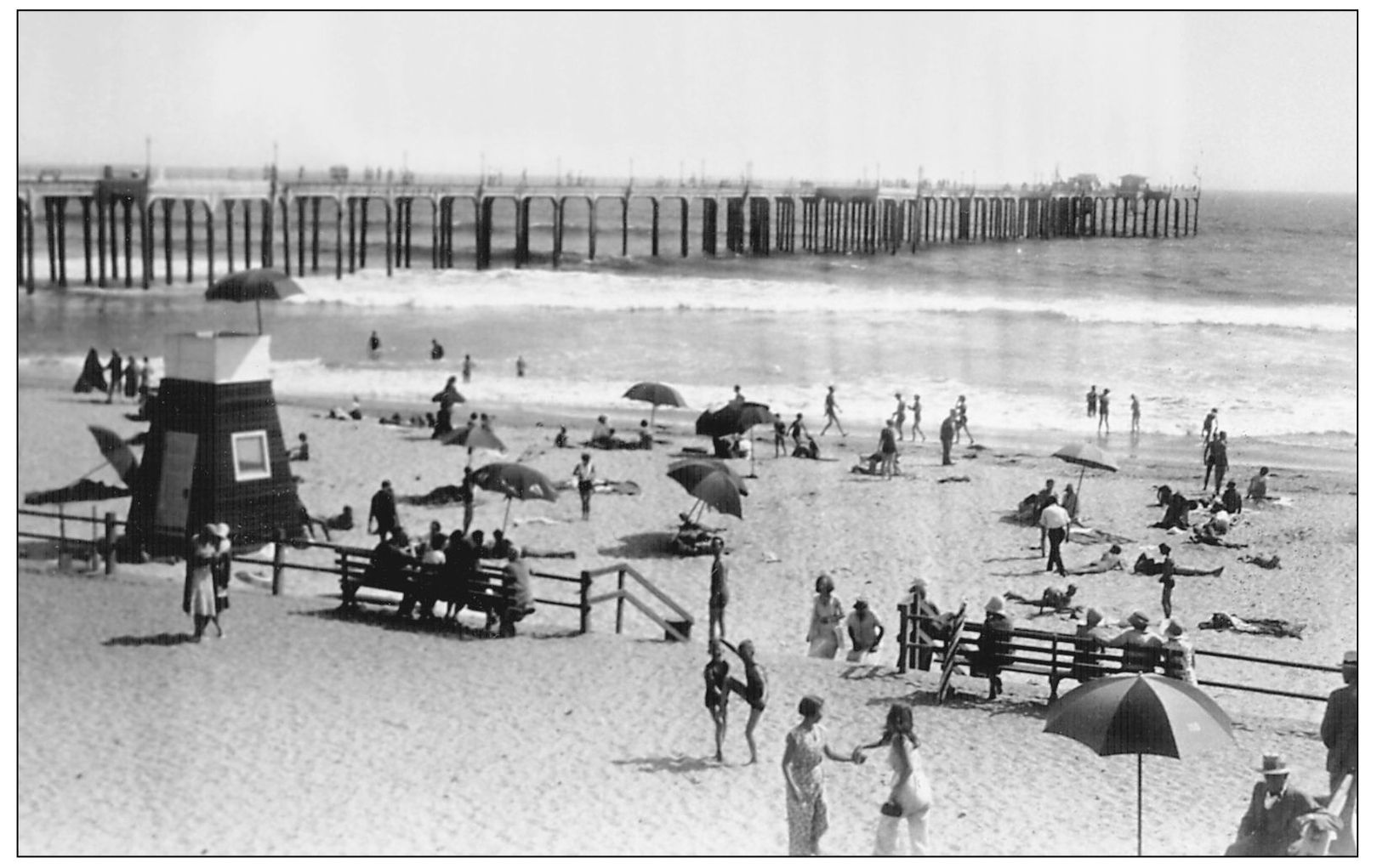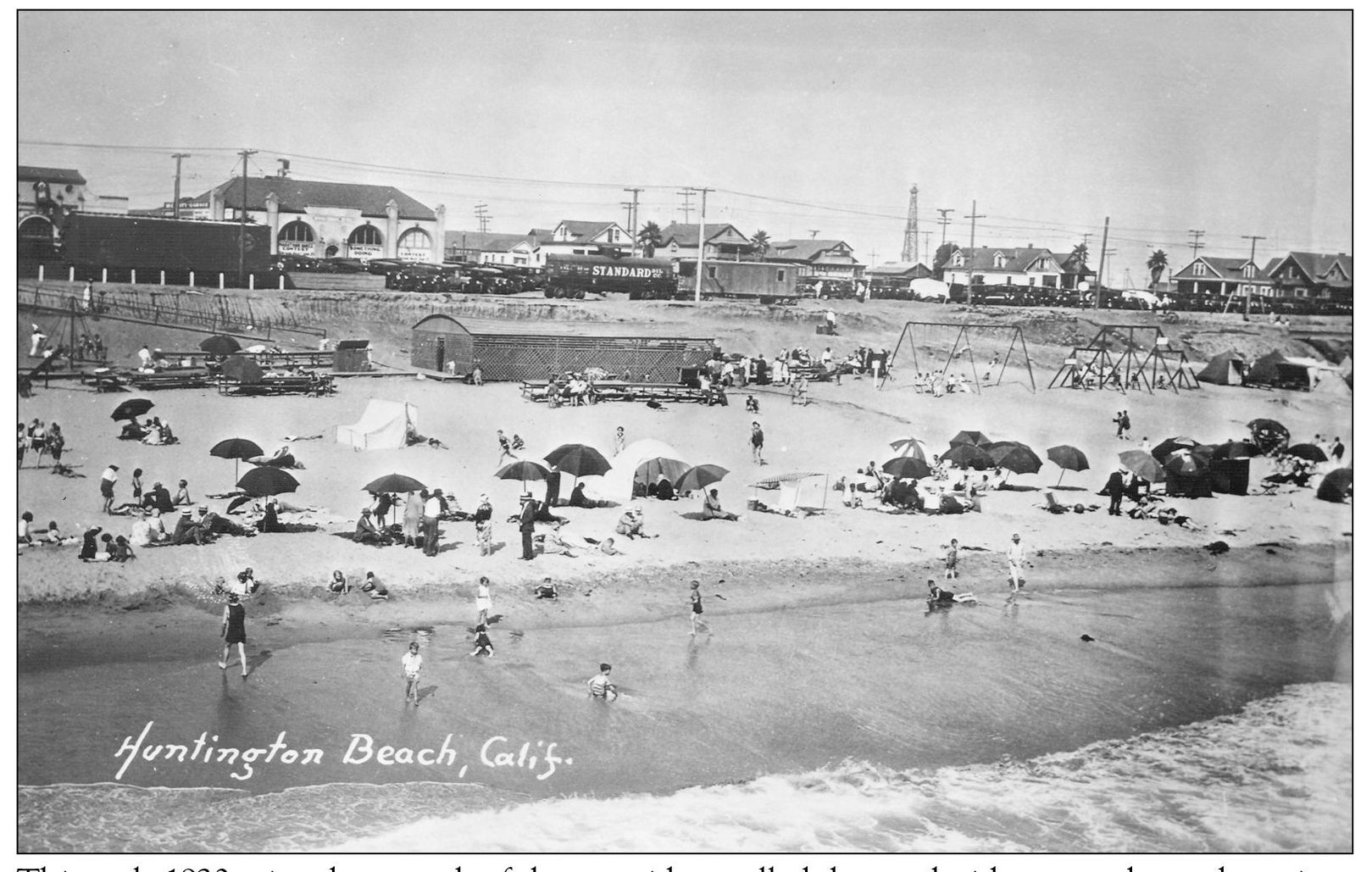ACKNOWLEDGMENTS
This book was an incredible journey that led, in sometimes funny ways, to a wide variety of locations in Orange, Los Angeles, San Diego, and Riverside Counties. I thank everyone for their contributions and support. The Huntington Beach Marine Safety Division was the original source for this book; therefore, I am most grateful to marine safety chief Kyle Lindo, Mike Bartlett, Matt Karl, Claude Panis, Mike Eich, Kristina Eich, Doug Leach, and Eric Rex. From the lifeguard alumni, I must also thank Max Bowman, Doug DArnall, and Bill Richardson for placing so many names to unidentified faces. I also thank Bob Knis Knisley (1937 crew), Jack Cockrell and Lewis Ross (both 1942 crew), Harlo LeBard and Elmer Combs (1944 crew), and Frank Ciarelli and Chuck Linnen. From Huntington State Beach, thanks go to Mike Brusard, Bill Kramer, Lonnie Graham, Steve Hicks, John Rodgers, John Hernandez, the Deboer brothers, Alex Peabody, and Mike Martino. Newport Beach Marine Safety officers John Blauer and Brent Jacobson also deserve thanks. References for this book include Diann Marshs Huntington Beach: The Gem of the South Coast ; Lt. Michael Biggss The First 80 Years: History of the Huntington Beach Police Department ; Harry Henslicks Huntington Beach: An Oral History (California State University, Fullerton); archived issues of the HB News ; the personal notes of Bud Higgins, shared by his granddaughter, Gae Treece; several old issues of Ocean Lifeguard and American Lifeguard Magazine ; and, of course, the Internet. Retired Los Angeles County lifeguard chief Bob Burnside was my archivist mentor from my first photograph collected in 1991 to the last. I am even more grateful for the photographs and information collected from the late Johnie Belshie in 1991 and, interestingly, from Los Angeles County lifeguard lieutenant Bud Bohn. In 1978, Bohn interviewed Bud Higgins on cassette tape as they were parked in front of HB lifeguard headquarters in Bohns VW van, while Pacific Coast Highway (PCH) traffic sometimes muffled the recording. Priceless! Photographic credits go to Huntington Beach Marine Safety Division, Huntington Beach Surf Life Saving Association, Huntington State Beach, Office of the Huntington Beach City Clerk, Huntington Beach Public Information Office, Huntington Beach Police Officers Association, Amateur Athletic Foundation of Los Angeles (AAFLA), First American Title, Old Courthouse Museum, Orange County archivists Phil Brigandi and Chris Jepson, Jerry Person, Tom Mays, Dennis Masuda, National Dorymens Association (NDA), Peggy ODonnell, Aaron Pai, Alice Gustafson, Marylin Noth, Cris Catell, Marty Armstrong, Steve Reuter, Triduo.com , and myself (personal photographs). Finally, I give thanks, gratitude, hugs, and much more to my wife, Tara, and children, Lauren and Nolan.
Find more books like this at
www.imagesofamerica.com
Search for your hometown history, your old
stomping grounds, and even your favorite sports team.
One
THE EARLY YEARS 19041949
This image, called Morning Bath in the Surf, was taken August 11, 1908, on the west side of the Huntington Beach Pier. The post visible on the bottom left may have been the life-line placed in the surf-line for bathers to get back to shore. Often, the strong side currents, kelp, and seaweed would take away the posts along with the line. The original wooden pier was built in 1902, repeatedly damaged, ultimately destroyed, and replaced by a concrete pier in 1912.
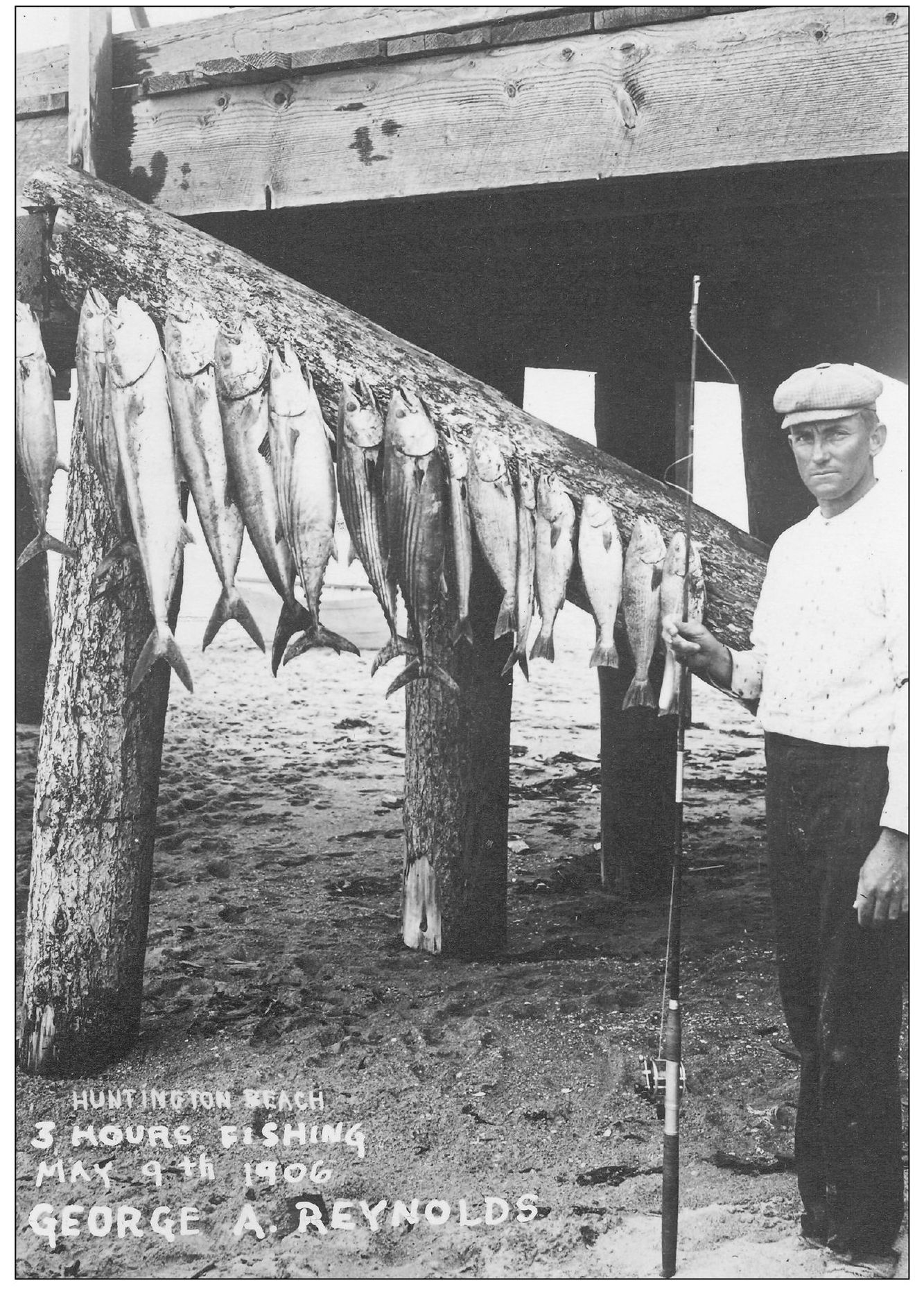
George A Reynolds, an excellent fisherman and doryman, was the first Huntington Beach lifeguard from 1904 to 1907. In 1906, next to the original wooden pier, he wrote fishing from the lifeboat about mile from shore, early one morningusing a 6B Wilson spoon for lure. He caught five bonita, three yellowtail, two barracuda, and five yellowfin croaker. Reynolds was the first pier area manager in 1904, was town constable in 1905, patrolled the dirt streets of Ocean Boulevard and Main Street on bicycle, and was the first volunteer community bandleader. He became a real estate agent and later an engineer, and in 1908, George and his older brother Alva obtained a U.S. patent and investors, and built the Reynolds Wave Motor. The Reynolds Invention Will Soon Revolution the Worlds Power Supply, proclaimed an advertisement in the Huntington Beach News . The wave motor was built on the Twenty-First Street Wharf and harnessed just enough energy to light the bulbs on the wharf. Because it was unable to harness more energy, the last HB News report on the wave motor was in 1913.
The high tide and surf pounds the west side of the pier Bath House in this February 3, 1912, photograph. The Bath House, also known as the Salt Water Plunge, first opened in 1911. The Plunge in later years was a major attraction and held summer swim meets often attended by the Los Angeles Athletic Club.
Ben the seal was a favorite attraction for locals and visitors to the pier in 1915. Ben was not the first or the last rescued seal to call the small concrete saltwater pool home. At the time, it was a relatively great expense for the city to feed Bena cost of $227 for the year. The new, 1,000-foot concrete pier was built in 1912.
John Paul Helme stands near the Plunge with the standard-issue umbrella and wool bather in either 1914 or 1915. Johns father, Matthew E. Helme, who was influential for years, became the fourth mayor of Huntington Beach in 1916. The original 1910 Helme House at 517 Walnut Street is now the M. E. Helme Antiques store, which is still open for business in 2007.
This early-1920s beach photograph, likely taken from the Plunge, shows the west side of the pier and the only lifeguard tower at the time. In 1921, the chief of police Jack Tinsley was given the responsibility of the fire department and to hire lifeguards as needed. Prior to Tinsley, the selection and hiring of lifeguards was shared equally between the Huntington Beach Company and the City of Huntington Beach.
This early-1920s pier photograph of the east sidecalled the south side nowshows the swings and playground area, plenty of tents, and an oil well in the distance. The east side of the pier was not yet protected by lifeguards and was still owned by the Huntington Beach Company.

